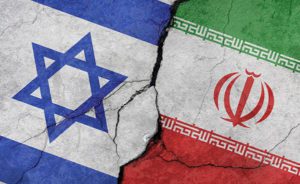The death of the Iranian president is the latest in a series of strange coincidences
A strange series of events took place recently:
- Iranian authorities confirmed that Iranian President Ebrahim Raisi, Iranian Foreign Minister Hossein Amir Abdollahian and all other passengers were killed when the helicopter they were traveling in crashed in Iran’s mountainous northwestern region.
- One of Europe’s most important pipelines in one of the most closely monitored areas of the Baltic Sea was destroyed by an act of sabotage, and investigations by Sweden and Denmark ended without identifying a culprit.
- The Slovak Prime Minister, who had stopped his country’s aid to Ukraine, was shot five times by an elderly citizen acting alone and a staunch supporter of Ukraine.

The Iranian president and foreign minister were killed in a freak helicopter crash, while the other two escort helicopters returned safely.
“They had three helicopters in a row and suddenly one of them went down. No distress call. Nothing. And if it was the fog, why did the other two get through? But the president didn’t?” Michael Maloof, a retired security analyst, asked the hosts of Sputnik‘s Critical Hour.
The Iranian delegation was in the Iranian province of East Azerbaijan, which borders Azerbaijan, which is a close ally of Israel.
An Israeli official reportedly told US media that Israel had nothing to do with the death of the Iranian president.
“There are other incidents in the West, including the assassination attempt on the [Slovak] prime minister… So these are not isolated incidents. There is something bigger going on out there. I think people are trying to put their finger on it,” Maloof added.
He also told that on the same day that the Iranian president’s helicopter crashed, officers of the Democratic Republic of Congo (DRC) army announced that they had foiled a coup attempt and arrested 50 people, including three Americans. The alleged leader of the coup, Christian Malanga, was killed. Malanga lived in the United States for most of his life and visited the Israeli military in 2015.
Maloof concluded that the reaction will be large if it turns out that Israel was involved in Raisi’s death. “You saw the reaction when the Israelis attacked the Iranian consulate in Syria? For the first time, Iran showed that it can attack Israel directly. If this helicopter crash was really targeted and can be linked to Israel, I think we will see a very strong reaction.”
Raisi’s chief of staff, who flew in the helicopter directly behind Raisi, hints at a possible crime
Gholam Hossein Esmaili, who was in the third helicopter of the presidential convoy, describes the moments before Ebrahim Raisi’s helicopter disappeared from sight.
Raisi’s chief of staff, who was sitting directly behind Raisi in the helicopter, hinted at a possible crime, as the president’s helicopter drifted into the fog for inexplicable reasons.
This is what Esmaili says:
“Esmaili: After the noon prayer, we left for Tabriz. The weather was clear, there was nothing to worry about. After half an hour in the air, before we reached the Sungun copper mine, there was a small patch of clouds.
Interviewer: So there was no fog?
Esmaili: Not at all. It was foggy on the ground, but not in the air where we were flying in the helicopters. However, there was a small patch of cloud over a cliff in a small, dense area. This cloud was at the altitude of our flight.
There, the now martyred helicopter pilot, who was also the commander of the fleet, ordered the other pilots to climb above the clouds. We were the third pilot behind the President’s helicopter. We got above the clouds and were about 30 seconds ahead. Suddenly our pilot noticed that the lead helicopter with the President was missing.
Interviewer: You didn’t see the helicopter again after the ascent?
Esmaili: Yes, exactly, after we were above the clouds we no longer saw the main helicopter. The ascent itself was not difficult or strenuous. Sometimes when we fly in the plane we feel turbulence, but this time, during the ascent, we didn’t feel anything at all in the helicopter. And after the ascent we didn’t see any clouds either.
Interviewer: So there was no weather forecast that would have indicated any disruptions that would have endangered safety?
Esmaili: No, there was not. A short time later we could see down, there were no more clouds and we had reached the copper mine area. But we noticed that our pilot suddenly turned around, so I asked him why. He said that one of our helicopters was missing. ‘We assume that he made an emergency landing because we no longer have radio contact with him either.’ I asked him when he had last been in contact. The pilot replied: ‘One minute and 30 seconds ago, when he told us to climb above the clouds’.”
War between Israel and Iran is imminent: here’s why

Watching tensions in the Middle East increase year after year, it is not difficult to guess the reason for the heating up. The reason lies in the presence of relatively equal and competing powers in the region, from Iran and Turkey to Israel, Saudi Arabia and Egypt. These powers pursue different strategic goals and are supported by various global powers that also have different, conflicting interests in the Middle East.
In the case of Israel and Iran, there are several factors that distinguish their competition from that of other regional powers. Both countries have a wide range of resources. Both countries have ties to very different global alliances. Both countries share key spheres of influence, such as Syria, Iraq, Lebanon, and Yemen. In addition, both countries have different political ideologies, a factor that has done much to make them bitter regional competitors and enemies.
In terms of numbers, Israel is the second largest economy in the Middle East after Saudi Arabia, with a GDP of 522 billion (USD). Iran’s GDP is 388 billion USD, a figure that is also telling in terms of economic power. Due to its geographical location, Israel is an important part of the international trade routes between Asia, Europe and North America, while Iran enjoys a great advantage due to its location as a major transit route between Asia and Europe.
Iran, in particular, maintains very close relations with two major powers, Russia and China, in all areas, political, military and economic. Israel, on the other hand, is a key ally of the West in the Middle East, and some analysts even go so far as to call Israel “an extension of America’s land outside its borders.” The opposing nature of the global alliances is likely to further complicate relations between the two powers, as both Iran and Israel will have to seriously consider the interests of their global backers in the event of a “rapprochement” or indirect negotiations.
Israel has the second largest military budget in the Middle East, after Saudi Arabia, and 16th in the world rankings. Tel Aviv’s defense budget is estimated at $27.5 billion for 2023. Iran’s military budget, on the other hand, is estimated at $10.3 billion for last year. Both budgets are considered high, and both budgets are used to fund advanced weapons development research. Therefore, both armies are considered well-equipped and well-trained.
Israel is a nuclear power and has the largest air force in the Middle East, not to mention its modern arsenal of cruise missiles and long-range rockets. Tel Aviv also enjoys extensive military support from the US, UK, Germany and other technologically advanced armies. However, the Iranian army is larger in terms of the number of soldiers and the number of mechanized machines and artillery forces. Tehran has been steadily developing long-range missiles capable of hitting any point in Israel in recent years and is known to have a large fleet of advanced attack drones.
Both countries have well-researched nuclear programs, but Israel’s is much more advanced than Iran’s. Israel is known to have nuclear bombs in its non-traditional weapons arsenal, while Iran works day after day to develop its nuclear program and has no signs of stopping. Apparently, Iran knows full well that a home-made nuclear bomb is the only guarantee to prevent a possible Israeli use of nuclear weapons against its forces or country. Therefore, stopping Iran’s nuclear program or dismantling it is an “unrealistic” option in the current regional atmosphere.
Given the continued advances of Iran’s nuclear program, there is a strong likelihood that Israel will eventually attack Iran and destroy its nuclear program if Tehran comes too close to developing a nuclear bomb. Moreover, many Israeli officials have said they would rather deal with a non-nuclear-armed Iran than a nuclear-armed Iran. In other words, Iran is already powerful, expansive, and very influential in the Middle East, and developing its first nuclear bomb will significantly complicate the atmosphere for Tel-Aviv and limit its influence even further.
Aside from the nuclear dilemma between the two states, both share massive spheres of influence – such as Syria and Lebanon – which have shortened the distance between the two armies and made tensions higher than ever. The recent bombing of the Iranian embassy in Damascus is a good example of this. Today, Tel-Aviv and Tehran are no longer regional powers separated by buffer countries, but powers fighting wars on direct borders, be it in Syria, Yemen or Lebanon. In other words, the closer the armies are to each other, the higher the risk of direct conflict.
If Iran continues to develop its nuclear capabilities and Israel sees these capabilities as a “national threat” to its future, war will eventually break out between the two countries. All recent developments logically lead to this alarming conclusion and no other.
yogaesoteric
May 27, 2024
